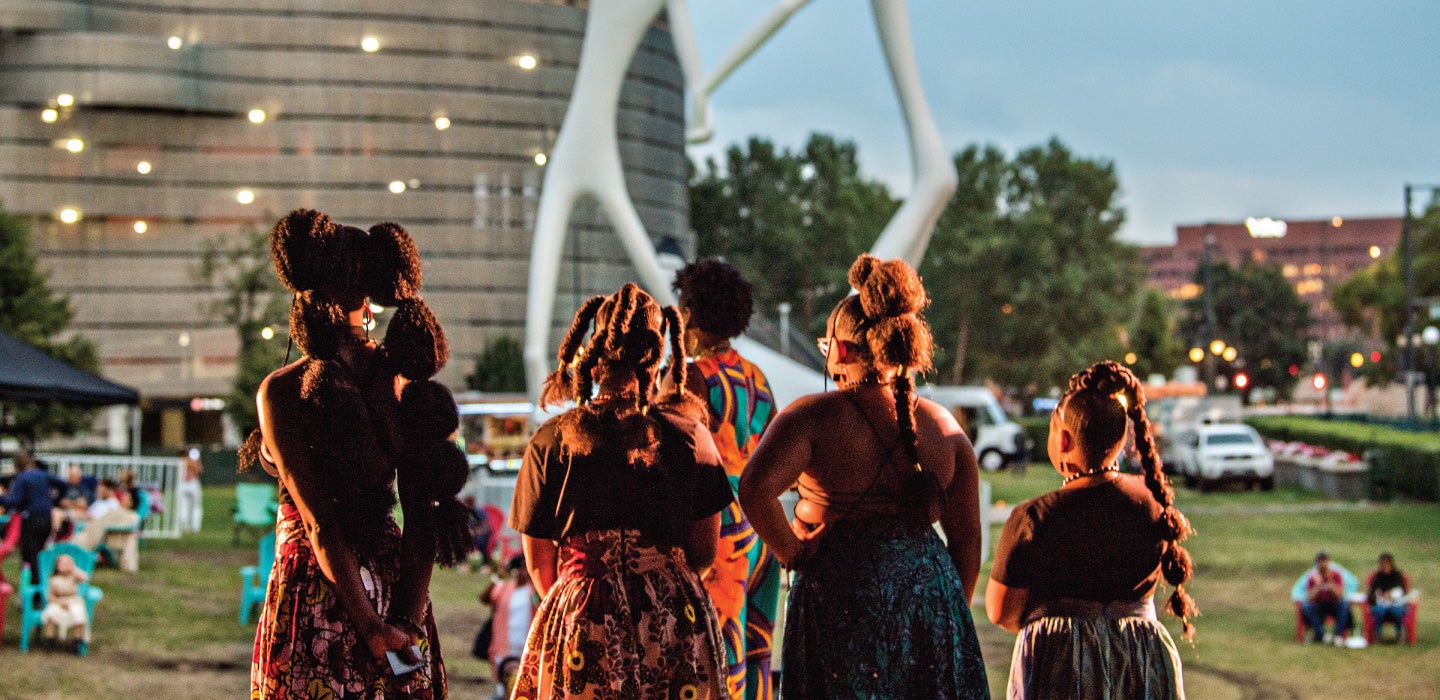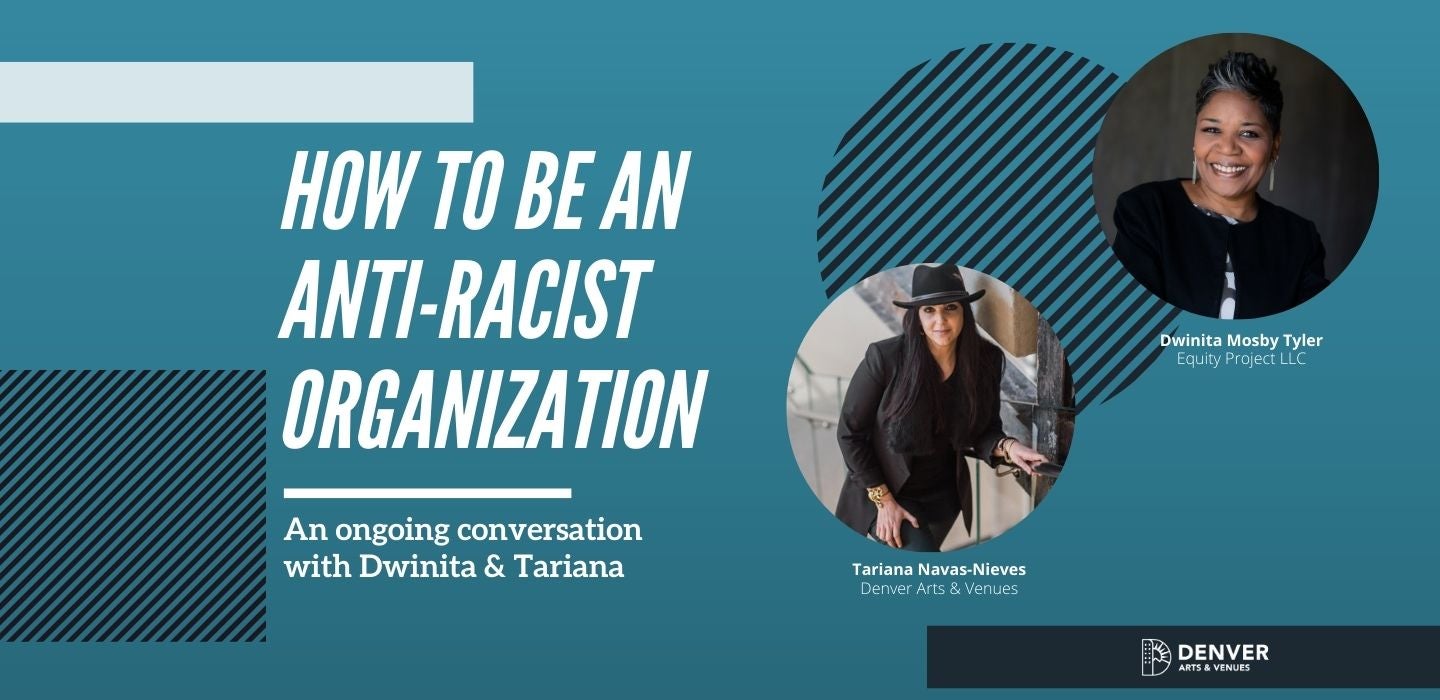EQUITY, DIVERSITY & INCLUSION

African American hair and fashion show presented by The Wine Suite's Night At Wakanda program | Sunset Cinema - Jonathan Phillips Photography
![]()
EQUITY, DIVERSITY & INCLUSION
Inspired by Denver's Cultural Plan, Denver Arts & Venues is committed to Equity, Diversity and Inclusion (EDI) across all our programs, initiatives and processes. We hold a steadfast dedication to all our residents, as Denver is a city where everyone matters, and everyone matters in the arts.
Denver Arts & Venues is deeply committed to an equity, diversity and inclusion (EDI) practice that closes access gaps in arts and culture with urgency and accountability. We believe long term impact requires changing traditional processes, creating new systems, and developing authentic relationships and transformative work. Our work stands at the intersection of arts, culture and community.
EDI means inviting values, perspectives and contributions of people from diverse backgrounds into our programs and exhibitions.
Equity
The fair treatment, access, opportunity, and advancement for all people, while at the same time identifying and eliminating barriers that have prevented the full participation of some groups. Improving equity involves increasing justice and fairness within the protocols, processes, practices and policies of institutions or systems, as well as in their distribution of resources. Confronting and tackling equity issues requires an understanding of the root causes of disparities within our society. Equity is closely tied to actions and results to address historical disparities.
Diversity
Recognition and representation of individual or group differences encompassing a wide variety of human differences, including differences such as race, age, gender, gender identity, sexual orientation, ethnicity, physical disabilities, appearance, and historically underutilized and disadvantaged persons, as well as social identities such as religion, marital status, socio-economic status, lifestyle, education, parental status, geographic background, language ability, and veteran status. We integrate diversity into hiring and retention policies, training opportunities and business development methods to provide an equal opportunity for each person to participate, contribute and succeed.
Inclusion
Embracing differences by creating environments in which any individual or group can feel welcomed, respected, supported, and valued to fully participate. While an inclusive group is by definition diverse, a diverse group isn’t always inclusive. To achieve inclusiveness, recognition of implicit or unconscious bias is necessary.
We approach the definition of arts and culture in the broadest of terms – visual art, performing arts, fashion, design, culinary arts, music, film, dance, theatre, literary arts, health and wellness, educational programs – and remain steadfast in our commitment to bring arts from all disciplines and from across the world to Denver residents and visitors.
Multilingual Communications
Efforts include:
-
Since 2017, we have been translating key communications into Spanish, including agency press releases, online applications, and calls for performers and artists.
-
We create bilingual educational displays for exhibitions at the McNichols Civic Center Building and Buell Theatre lobby.
-
Translation and interpretation services are provided at no cost for informational meetings, applications, DAV-produced events and programs, and other documents and materials upon request.
-
DAV has conducted an assessment of international symbols used on signage at all agency venues. Results guided a plan to incorporate universal signage at our premier public venues to facilitate navigation and wayfinding. This project also supports the city’s international efforts.
-
Language preferences are taken at varying stages throughout our communication with patrons, including during registration for DAV events and in our grant applications and Public Art requests for proposals. This information is used to best communicate with those we interact with and will also be used to inform translation and interpretation processes in the future.
Exhibitions and Programs
Art exhibitions at McNichols Civic Center Building and Buell Theatre Lobby, as well as DAV-produced events and programs, focus on themes of diversity, equity and inclusiveness. We believe in showcasing the breadth and depth of art and culture in Denver, Colorado, and beyond.

